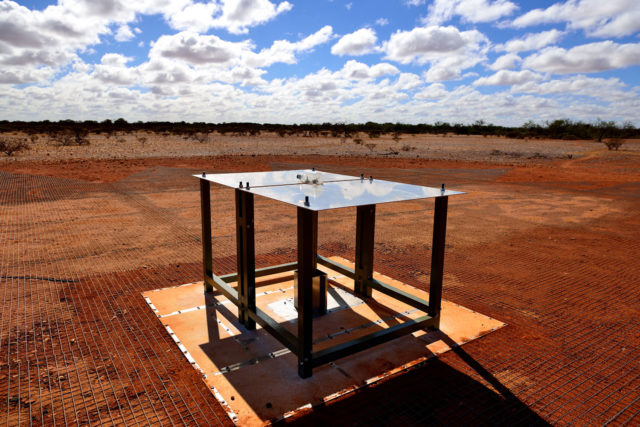First light from the universe detected by astronomers
Radio signals were captured from the time the earliest stars ‘lit up’.

In the beginning, “darkness was upon the face of the deep”.
Then, according to the Book of Genesis, a mighty voice uttered the command: “Let There Be Light.”
More than 13 billion years later, astronomers on Earth observed what happened next as the first stars flickered into life.
A US team has captured the faintest of signals from the moment the earliest stars “switched on” – just 180 million years after the the birth of the universe.

Then over a period of 50 to 100 million years gravity caused the densest regions of gas to collapse and form the first stars.
The radio fingerprint detected by the astronomers revealed the effect stars lighting up had on the hydrogen around them.
Ultra-violet radiation disturbed the hydrogen atoms, leading to a characteristic signal emission.

“What’s happening in this period is that some of the radiation from the very first stars is starting to allow hydrogen to be seen. It’s causing hydrogen to start absorbing the background radiation, so you start seeing it in silhouette, at particular radio frequencies.”
The signal was detected not with a powerful space telescope or giant dish antenna but a specially designed receiver the size of a table top in a remote part of western Australia.
An exciting finding from the Edges (Experiment to Detect Global EoR Signature) instrument was that hydrogen in the primordial universe must have been twice as cold as previously thought, a chilly minus 454 Fahrenheit (minus 270C). This is just a few degrees above “absolute zero”, the lowest temperature possible in nature.
One explanation may involve an interaction between “normal” and “dark” matter, taking physics into a previously unseen realm. Dark matter makes up 85% of matter in the universe yet its nature is still unknown.
The new discoveries are published in the latest edition of Nature journal.
Peter Kurczynski, from the US government’s National Science Foundation, which supported the research, said: “There was a great technical challenge to making this detection, as sources of noise can be a thousand times brighter than the signal – it’s like being in the middle of a hurricane and trying to hear the flap of a hummingbird’s wing.
“These researchers with a small radio antenna in the desert have seen farther than the most powerful space telescopes, opening a new window on the early universe.”
British expert Professor Carole Haswell, head of astronomy at the Open University, said: “This is a very exciting result. For me the most interesting thing is that it reveals some of the properties of the first generation of stars in the universe. We can’t directly observe these first stars, but this work gives an ingenious way of learning about them.”





